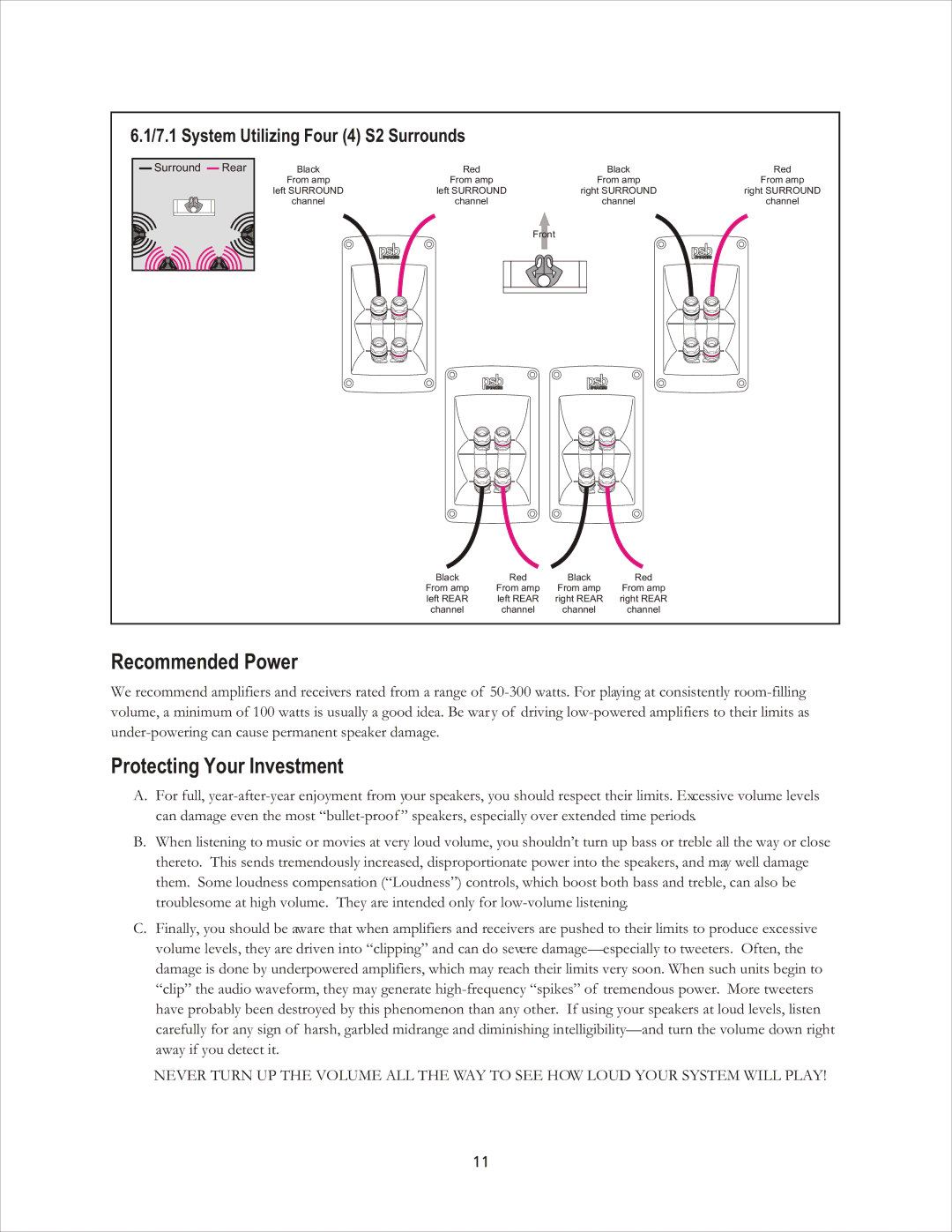Platinum Series specifications
PSB Speakers has long been celebrated for its dedication to delivering high-fidelity audio experiences, and the Platinum Series stands as a testament to this commitment. This flagship line of speakers has been meticulously engineered to provide audiophiles with an unmatched listening experience that marries cutting-edge technology with exquisite craftsmanship.One of the standout features of the Platinum Series is its solid construction. The cabinets are meticulously designed using high-performance materials that minimize resonance and unwanted coloration. This design ensures that the audio produced remains faithful to the original recording, allowing for a more immersive listening experience. Each model in the series is built to endure while also looking aesthetically pleasing, seamlessly integrating into any home environment.
At the core of the Platinum Series is its proprietary drivers. PSB incorporates advanced drivers that are designed to deliver exceptional sound quality across the frequency spectrum. The mid-range drivers utilize a unique aluminum cone designed for stiffness and lightweight properties, promoting quick response and accurate sound reproduction. The high-frequency drivers employ sophisticated dome tweeter technology that guarantees extended frequency response and improved dispersion. Together, these drivers provide an expansive sound stage, making every note and subtle detail come alive.
Another defining characteristic of the Platinum Series is its impressive power handling and efficiency. The speakers are designed to deliver remarkable performance levels, even at lower volumes, making them suitable for various listening environments. Whether you are enjoying a quiet evening of classical music or hosting a lively party with dynamic pop tracks, these speakers rise to the occasion without distortion, ensuring consistent clarity every time.
The Platinum Series also embraces innovative technologies like the Acoustic Refractor, which enhances the spatial qualities of sound by optimizing the speaker's interaction with the room. This technology aids in creating a more natural and enveloping listening experience, allowing the music to fill the space evenly.
Moreover, the Platinum Series features elegantly integrated binding posts that support bi-wiring and bi-amping configurations. This flexibility offers audiophiles the ability to customize their audio setup for even greater performance.
In conclusion, the PSB Speakers Platinum Series is a remarkable fusion of advanced technology and superior craftsmanship, offering a rich and engaging audio experience. With its premium materials, innovative driver designs, and high-performance features, the Platinum Series promises to satisfy even the most discerning listeners, solidifying PSB's reputation in the world of high-fidelity audio.

